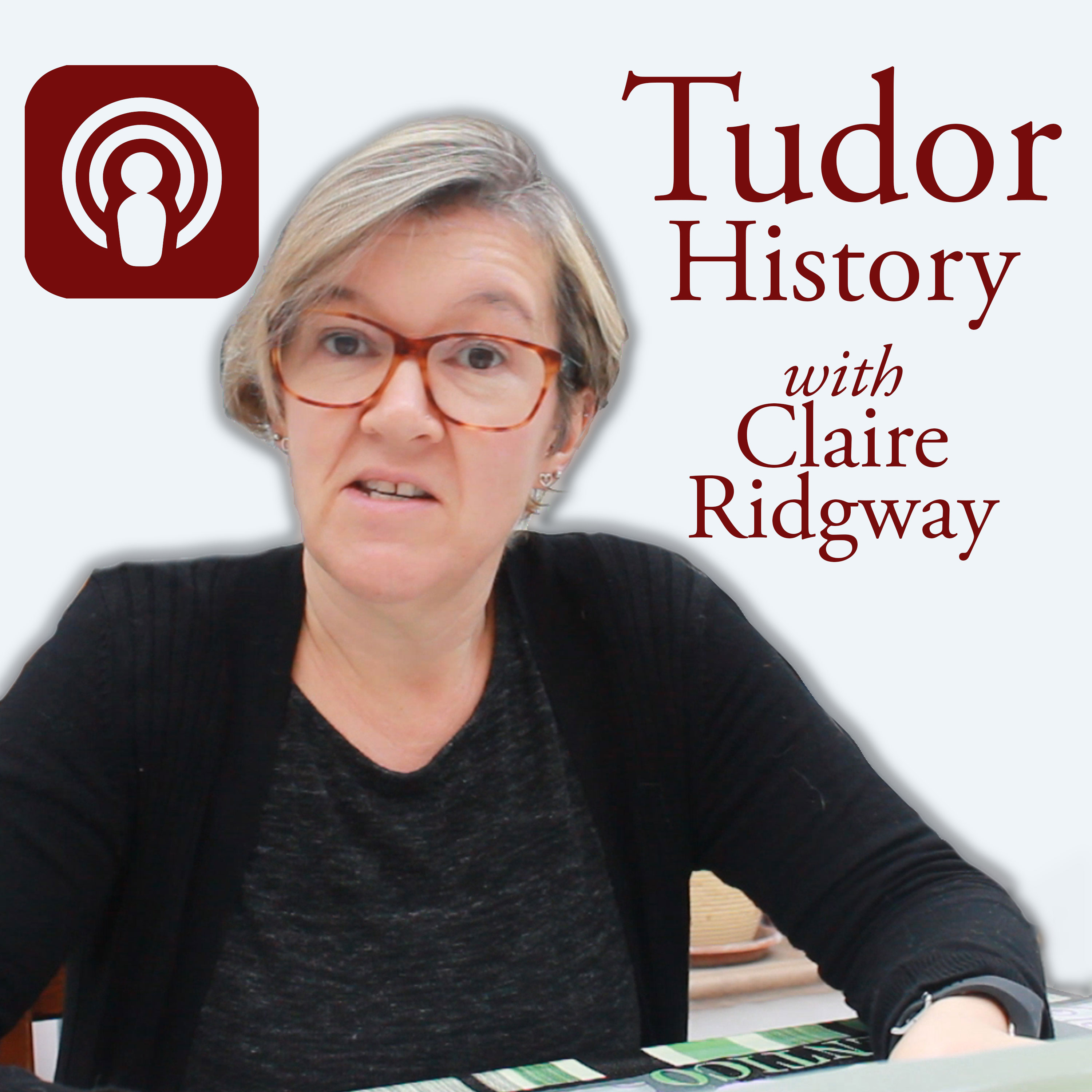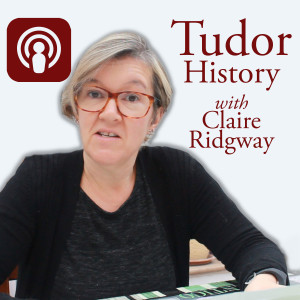Tudor History with Claire Ridgway

Step back into a world of intrigue, passion, and ruthless ambition — welcome to Tudor England. Join historian and bestselling author Claire Ridgway as she uncovers the riveting stories of the Tudor dynasty. From the scandalous love affairs of King Henry VIII to the tragic fall of Anne Boleyn, the fierce reign of Elizabeth I, and the lesser-known secrets of Tudor court life, this podcast brings history to life in vivid detail. Hear dramatic tales of betrayal, execution, forbidden love, and political manoeuvring that shaped England forever. Discover daily Tudor history with fascinating “On This Day” episodes — unique insights you won’t find in typical history books. Get behind-the-scenes stories from Claire’s own research trips to historic sites like the Tower of London, Hampton Court Palace, Hever Castle, and more. Enjoy interviews with top historians and experts in Tudor studies, plus lively Q&A sessions tackling listeners’ burning Tudor questions. 🖋 Who is Claire Ridgway? Claire is the author of the bestselling On This Day in Tudor History series and numerous other Tudor books loved by readers around the world. She founded The Tudor Society, connecting enthusiasts with experts through live online events, and runs the hugely popular history websites The Anne Boleyn Files and www.ClaireRidgway.com. Her mission: to uncover the human stories behind the crown — the hopes, fears, and triumphs of not only kings and queens but also the courtiers, rebels, and ordinary people who lived under the Tudor rose. What can you expect? - Gripping accounts of famous events like the Field of Cloth of Gold, the Dissolution of the Monasteries, or the Babington Plot. - Intimate portraits of Tudor figures: Anne Boleyn’s charm and downfall, Thomas Cromwell’s rise and brutal fall, Elizabeth I’s cunning survival. - Dark mysteries and unsolved deaths — who really killed Amy Robsart? Was Katherine Howard truly guilty? - Special episodes on Tudor fashion, food, medicine, and the day-to-day lives of Tudor men and women. Join thousands of Tudor fans worldwide Never miss an episode — subscribe now and become part of a global community that can’t get enough of Tudor drama. Explore more with Claire’s books, free resources, and live historical events at www.ClaireRidgway.com. Ready to travel back 500 years? Press play and let the adventure begin.
Episodes
Episodes



Sunday May 16, 2021
16 May - Thomas More resigns
Sunday May 16, 2021
Sunday May 16, 2021
On this day in Tudor history, 16th May 1532, Sir Thomas More resigned as Henry VIII's Lord Chancellor.
But what led to More's resignation when he had been such a loyal servant to King Henry VIII?
Find out from historian Claire Ridgway.
You can see this podcast as a video at the following link:https://youtu.be/CS_9ms0ubmA



Saturday May 15, 2021
20 Interesting Facts about the Wars of the Rose
Saturday May 15, 2021
Saturday May 15, 2021
In this edition of her Facts About series, historian Claire Ridhway takes us back to the Wars of the Roses, that period of civil war between 1455 and 1487.
Find out about the background to the Wars of the Roses, who was involved, what happened and how they came to an end, as well as some Wars of the Roses trivia.
You can see this podcast as a video at the following link:https://youtu.be/En8iu6VZ8eM



Saturday May 15, 2021
15 May - Henry VIII’s problems in the bedroom become public
Saturday May 15, 2021
Saturday May 15, 2021
On this day in Tudor history, 15th May 1536, Henry VIII's second wife, Queen Anne Boleyn, and her brother, George Boleyn, Lord Rochford, were tried one after the other in the King's Hall of the Tower of London.
It was during George's trial that problems the king was experiencing with his wife became public, something which must have been rather embarrassing for the king.
Find out what happened on that day in 1536 from Claire Ridgway, author of The Fall of Anne Boleyn: A Countdown. You can see this podcast as a video at the following link:https://youtu.be/l-h1cA977k0



Friday May 14, 2021
14 May - The Creeping Parliament
Friday May 14, 2021
Friday May 14, 2021
On this day in Tudor history, 14th May 1571, the "Creeping Parliament" was held in Edinburgh, Scotland.
Why was it called the "Creeping Parliament" and why were there actually two Parliaments meeting? What was going on and what happened next?
Find out more from historian Claire Ridgway. You can see this podcast as a video at the following link:https://youtu.be/Qg_XhizMzKY



Thursday May 13, 2021
Fan Q&A - Did Anne Boleyn bring down Cardinal Wolsey?
Thursday May 13, 2021
Thursday May 13, 2021
Thank you to Kristian from Bulgaria for his question about Anne Boleyn and her role in the fall of Cardinal Thomas Wolsey, Henry VIII's Lord Chancellor and chief advisor.
What role did Anne Boleyn have in Cardinal Wolsey's fall and his eventual arrest? Did Anne and her family work to bring Wolsey down? Was Wolsey's fall Anne Boleyn's revenge for him breaking up her romance with Henry Percy?
Find out in this latest Fan Q&A talk from historian Claire Ridgway. You can see this podcast as a video at the following link:https://youtu.be/RjePQyNINFo
Book recommendation: The Life and Death of Anne Boleyn by Eric Ives



Thursday May 13, 2021
13 May - Queen Anne Boleyn is on her way out
Thursday May 13, 2021
Thursday May 13, 2021
On 13th May 1536, eleven days after her arrest, the royal household of Queen Anne Boleyn was broken up and her household discharged.
The queen hadn't even been tried yet, never mind found guilty!
Find out more about this day and what happened to members of her household in this #TudorHistoryShorts talk from historian Claire Ridgway. You can see this podcast as a video at the following link:https://youtu.be/eZlV_9_5PYc



Wednesday May 12, 2021
12 May - An innocent man is charged with treason
Wednesday May 12, 2021
Wednesday May 12, 2021
On this day in Tudor history, 12th May 1537, John Hussey, a Northern baron, was charged with treason even though he was innocent and had actually done the opposite of what he was accused of.
Poor man!
Find out what happened to John Hussey, Baron Hussey, from historian Claire Ridgway.
For more details, watch Claire's video on Thomas Darcey and John Hussey at https://youtu.be/0Xgq02AssWo



Tuesday May 11, 2021
11 May - Henry VIII accuses the clergy of treason
Tuesday May 11, 2021
Tuesday May 11, 2021
On this day in Tudor history, 11th May 1533, Henry VIII made himself an enemy of the English clergy by accusing them of being traitors.
Wny? What was going on? What happened next?
Find out from historian Claire Ridgway. You can see this podcast as a video at the following link:
https://youtu.be/IfuAUjY2yyI

I'm historian Claire Ridgway
I'm the best-selling author of 13 history books and the founder of the TheAnneBoleynFiles.com, Elizabethfiles.com and The Tudor Society.
I help Tudor history lovers worldwide to gain access to experts and resources to discover the real stories behind myths and fiction, so that they grow in knowledge while connecting with like-minded people and indulging their passion for history.
I am a Fellow of the Royal Historical Society. I was a contributor for the BBC docudrama The Boleyns: A Scandalous Family, and have been featured in BBC History Extra, USA Today, History of Royals Magazine, the Express, and Refinery 29, as well as on podcasts including Suzannah Lipscomb's Not Just the Tudors, Gareth Russell's Single Malt History, Natalie Grueninger's Talking Tudors, Hever Castle's Inside Hever, James Boulton's Queens of England, and many more.









